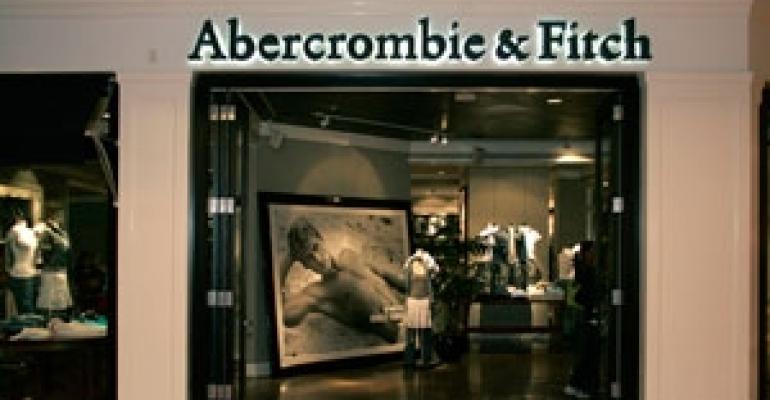As opportunities for store growth in the U.S. have dwindled, many retailers have set their sights overseas. But the latest headlines featuring teen apparel retailer Abercrombie & Fitch prove that in today’s precarious environment, even that strategy is no guarantee of success.

Hit hard during the recession, Abercrombie & Fitch made plans to close 15 percent of its U.S. stores and decided to concentrate on Europe as its next expansion stage. When the retailer opened its first European store in 2007, the flagship on Savile Row in London, it targeted sales of $2,500 per sq. ft., more than six times the sales generated in its U.S. stores.
Since then, the company added more than 75 stores in Europe in countries ranging from Germany to Italy to Sweden. In April, it opened its 16th store in Germany, a 23,680-sq.-ft. flagship in Hamburg. It also had plans to open new locations in Munich, Dublin and Amsterdam in fiscal 2012.
While Abercrombie runs a handful of stores in Asia (in China, Japan, Hong Kong and Singapore) as well as 19 stores in Canada, Western Europe made the most strategic sense from an expansion point of view because of the chain’s hefty price tags, aimed at well-to-do consumers, says Jaime M. Katz, an analyst who covers the retailer for Chicago-based research firm Morningstar. In 2011, European stores accounted for approximately 16 percent of Abercrombie’s total sales and 22 percent of its operating income, according to Morningstar.
But the deepening sovereign debt crisis in the Eurozone has led to a fall-off in sales in the region. In the first quarter, ended May 16, the company reported that total same-store sales declined 5 percent, mostly due to troubles in the international division—in the U.S., same-store sales posted an increase. And that was while the situation in Europe was relatively stable.
In fact, the falloff in sales came as a shock even to some analysts.
“We had recently returned from a trip in mid-April during which we visited the London, Milan and Paris flagships,” wrote UBS analysts Roxanne Meyer and Janice Ong in a May 16 note. “We came away thinking that trends had not deteriorated, and in fact improved versus 4Q sequentially, which was not the case in reality. We also came away believing that Hollister was still likely comping positive in the U.K., also not the case.”
During the company’s first quarter earnings call, back in May, CEO Michael S. Jeffries expressed confidence in the European expansion: “While we continue to review trends closely and be very disciplined in how we approach new store openings, we believe the current economics of our business in Europe strong affirm our long-term strategy.”
Given the rapidly changing headwinds, however, Abercrombie & Fitch might have to curtail its store openings in Europe, according to published reports. The company’s European stores tend to be larger than their U.S. counterparts, and can be more expensive to operate. “You can’t sell high-ticket items when austerity measures are in place,” says Katz.
What now?
With limited opportunities to open stores in its two main markets (U.S. and Europe), industry insiders now expect Abercrombie to expand its share buyback program to allocate capital. Currently, the company’s board has authorization to purchase up to 12.9 million shares of the company’s stock, but that figure is expected to increase significantly.
The timing is fortuitous, as Abercrombie’s stock is currently trading at about half its fair value estimate of approximately $60, according to UBS, and far below its 52-week high of $78.25 per share. As of Thursday morning, Abercrombie shares were trading at $32.62 apiece.
In the coming weeks and months, the stock price “is likely to be choppy—it will likely react to macro headlines as well as to other company reports that have European exposure,” write Meyer and Ong.
“I have no idea about what’s going on with the share buybacks, but maybe returning cash to shareholders [is] more fortuitous than opening stores that are going to struggle for some time,” says Katz. “When you are opening very big flagship stores, those stores need to work. If the productivity isn’t there, it just becomes a problem. [And] it could be that buying share at $30 makes more sense than buying them back at $60.”

